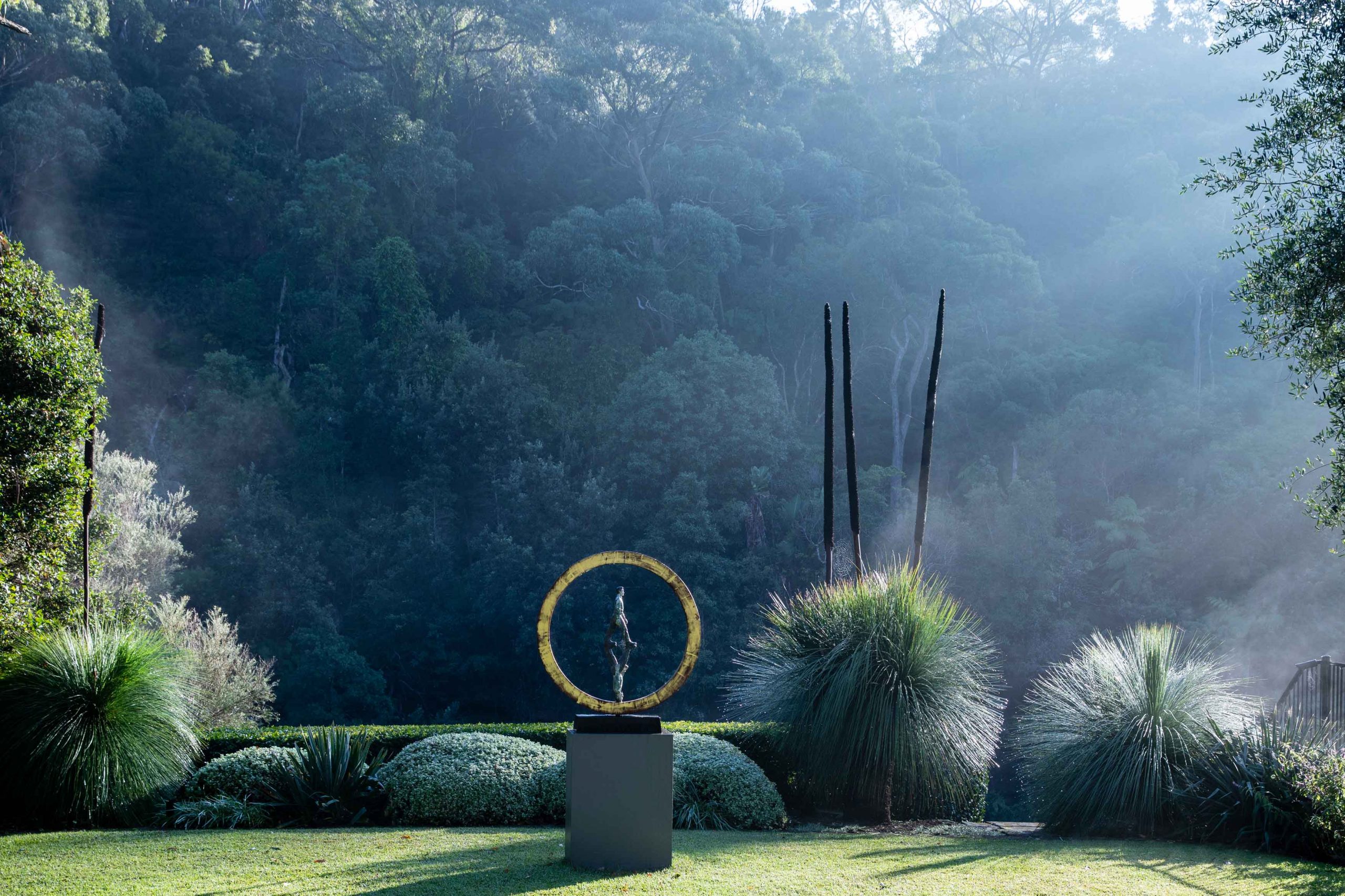River Garden Diaries: Playing in the Layers

- Words by
- Georgina Reid
I have lived many lives / some of them my own, wrote poet Stanley Kunitz in The Layers, one of my favourites of his poems. Written in his seventies, the poem is a reflection on transformation; on what is lost and what endures in a life. Some of his dearest friends had recently died and “I felt I was near the end of a phase in my life and in my work”, he said of the poem.
The poem came to Kunitz in a dream, a dark cloud instructing him to “Live in the layers, / not on the litter”. It ends as beautifully as it begins:
Though I lack the art
to decipher it,
no doubt the next chapter
in my book of transformations
is already written.
I am not done with my changes.
I am not done with my changes. What a great sentence to write towards the culmination of a life. Although Kuntiz didn’t realise at the time that he’d go on to live till age 102. Quite a few years left, quite a few changes.
–
The next, never last, chapter in the book of the river garden is currently being written. For the past months we’ve been shovelling, shovelling, shaping and more shovelling – the result of the installation of a septic system, quite possibly the least aesthetically exciting addition to any garden. The tank was installed in December last year. Our front garden was a chaotic weed-infested-but-still-charming wilderness beforehand. After, a wasteland. I love the man who did the digging, but I really do not love having an excavator in the garden.


It’s taken many hours of shifting piles of soil to finally create something coherent. Which is really just what was there previously, give or take a few curves. The digging is an important – though relentless – part of the gardening process. Slowly, slowly things begin to reveal themselves. Something in the space says ‘this might work’ or ‘what about you wind the path through here?’ The garden begins to speak.
This past weekend I’ve planted. A tray of 50 tubes of native plants, a bunch of grasses dug up and divided, some tubestock grown by my mum. Inspired by the work of John Rayner and Claire Farrell at the University of Melbourne’s Woody Meadow Project. Inspired by Claudia West and Thomas Rainer’s work on designed plant communities. But nothing like either.

As I dug holes, teased out roots, and nestled little lives into the earth I wondered why I couldn’t do more research, more planning, more following of rules written by people who design fabulous, layered, balanced plantings. I read and I listen to the people who know and then I just go and do my own thing – guided (sort of) by some kind of half-informed intuition.
If I were following the rules, the garden would already be a failure. Not enough groundcovers, too many weird spindly things, not enough bulk. I don’t have the right composition of plants and many are curiosities I’ve not seen in cultivation before. Who knows what will happen next?
This is the thing: I am addicted to playing with transformation. Setting something new – and likely rather strange – in motion. Not knowing what might happen in my freshly planted garden is very exciting to me. Of course, I’d like it to do something wonderful, and it might, but I imagine too, that the wallabies, possums and weird clay-sand soil will have their way. I imagine it will become something I couldn’t have imagined.
Play is an excellent word. It should be uttered, exclaimed, enacted more by gardeners, accountants, designers, lawyers, writers. I can research endlessly, know all the right things to do to make a garden/essay/poem succeed, and/or I can play. I can learn through the process of making/doing/building. This has, I suppose, always been my way.
This is not to say the rules aren’t there for a reason. Learning from the knowledge of people who have dedicated their lives to understanding principles – the nuts-and-bolts of how things work – is important. It’s just not the only path. Our culture tends to prioritise quantifiable, intellectual know-how over embodied experience. Someone (who? why?) seems to have decided a while back that playing is fine if you’re five, but not forty-five – a player at that age is a romantic swindler, not a curious human.
Life is too serious to play with, our culture tells us, but maybe playing should be taken more seriously?
Playing is a way of settling in to change. Having no pre-determined outcome in mind means no disappointment when things don’t go according to plan; when a garden does something different to what you imagined, when a piece of writing goes somewhere new, when life takes you to unexpected places. The thing is, and maybe this is what Stanley Kunitz points to in The Layers, the layers in-between the fixed-ness of our intellect (or the litter of our minds) might be where the juice of a life lies. The place where boundaries are fluid, ideas mutable, horizons vast and unconstrained.
The new garden is planted and I am inspecting it daily for signs of new growth and marsupial attack. Both will happen at some point and I know I’ll celebrate one and mourn the other. But I will also remind myself that they are one and the same. Growth inevitably means loss, and loss inevitably means growth. I think about the layers in between things – where the lines between desire and aversion are blurred and indistinct, where life can be played with rather than known – and I wonder if this might be a good place to sit a while. I wonder if this might be a garden.
–
Title image by Daniel Shipp. All other images by Georgina Reid.








